Related Research Articles
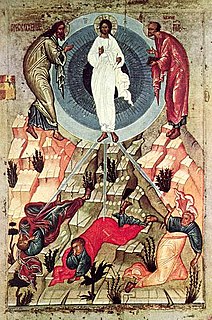
Bernard of Clairvaux, venerated as Saint Bernard, was a Burgundian abbot and a major leader in the revitalization of Benedictine monasticism through the nascent Cistercian Order.

Pope Alexander III, born Roland, was head of the Catholic Church and ruler of the Papal States from 7 September 1159 until his death. A native of Siena, Alexander became pope after a contested election, but had to spend much of his pontificate outside Rome while several rivals, supported by Holy Roman Emperor Frederick I Barbarossa, claimed the papacy. Alexander rejected Byzantine Emperor Manuel I Komnenos' offer to end the East–West Schism, sanctioned the Northern Crusades, and held the Third Council of the Lateran. The city of Alessandria in Piedmont is named after him.
Pope Adrian III or Hadrian III was the bishop of Rome and ruler of the Papal States from 17 May 884 to his death. He served for little more than a year, during which he worked to help the people of Italy in a very troubled time of famine and war.
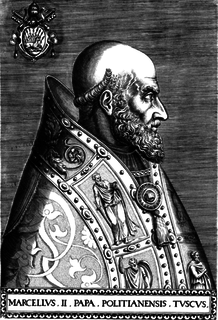
Pope Marcellus II, born Marcello Cervini degli Spannochi, was Bishop of Rome and hence head of the Catholic Church and at that time ruler of the Papal States from 9 April 1555 until his death 22 days later.
Pope Boniface IV was the bishop of Rome from 608 to his death. Boniface had served as a deacon under Pope Gregory I, and like his mentor, he ran the Lateran Palace as a monastery. As pope, he encouraged monasticism. With imperial permission, he converted the Pantheon into a church. In 610, he conferred with Bishop Mellitus of London regarding the needs of the English Church. He is venerated as a saint in the Catholic Church with a universal feast day on 8 May.
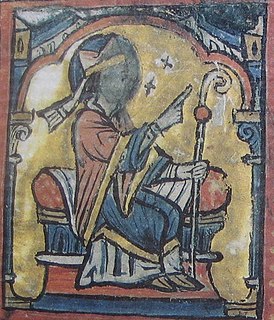
Pope Clement III, born PaulinoScolari, was the head of the Catholic Church and ruler of the Papal States from 19 December 1187 to his death.
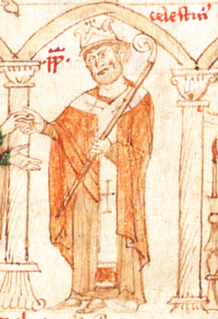
Pope Celestine III, born Giacinto Bobone, was the head of the Catholic Church and ruler of the Papal States from 30 March or 10 April 1191 to his death. He had a tense relationship with several monarchs, including Emperor Henry VI, King Tancred of Sicily, and King Alfonso IX of León.
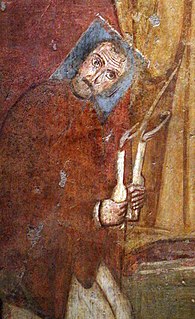
Pope Zachary was the bishop of Rome from December 741 to his death. He was the last pope of the Byzantine Papacy. Zachary built the original church of Santa Maria sopra Minerva, forbade the traffic of slaves in Rome, negotiated peace with the Lombards, and sanctioned Pepin the Short's usurpation of the Frankish throne from Childeric III. Zachary is regarded as a capable administrator and a skillful and subtle diplomat in a dangerous time.

Pope Paul III, born Alessandro Farnese, was head of the Catholic Church and ruler of the Papal States from 13 October 1534 to his death in 1549.
Pope John III, born Catelinus, was the bishop of Rome from 17 July 561 to his death.
Pope Damasus II was the head of the Catholic Church and ruler of the Papal States from 17 July 1048 to his death on 9 August that same year. He was the second of the German pontiffs nominated by Emperor Henry III. A native of Bavaria, he was the third German to become pope and had one of the shortest papal reigns.

The Cathedral of the Most Holy Savior and of Saints John the Baptist and John the Evangelist in the Lateran, also known as the Papal Archbasilica of Saint John [in] Lateran, Saint John Lateran, or the Lateran Basilica, is the cathedral church of the Diocese of Rome in the city of Rome, and serves as the seat of the bishop of Rome, the pope. The archbasilica lies outside of Vatican City proper, which is located approximately 4 kilometres (2.5 mi) to the northwest. Nevertheless, as properties of the Holy See, the archbasilica and its adjoining edifices enjoy an extraterritorial status from Italy, pursuant to the terms of the Lateran Treaty of 1929.

Eamon Duffy is an Irish historian. He is a professor of the history of Christianity at the University of Cambridge, and a Fellow and former president of Magdalene College.
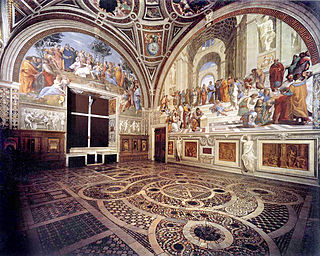
The four Raphael Rooms form a suite of reception rooms in the Apostolic Palace, now part of the Vatican Museums, in Vatican City. They are famous for their frescoes, painted by Raphael and his workshop. Together with Michelangelo's Sistine Chapel ceiling frescoes, they are the grand fresco sequences that mark the High Renaissance in Rome.
Henry Murdac was abbot of Fountains Abbey and Archbishop of York in medieval England.
The 1143 papal election followed the death of Pope Innocent II and resulted in the election of Pope Celestine II.

The 1145 papal election followed the death of Pope Lucius II and resulted in the election of Pope Eugene III, the first pope of the Order of Cistercians.

The 1181 papal election followed the death of Pope Alexander III and resulted in the election of Pope Lucius III. This was the first papal election celebrated in accordance with the decree Licet de evitanda discordia, promulgated in the Third Lateran Council in 1179, which established that the pope is elected by a majority of two thirds votes.
A papal judge delegate was a type of judicial appointment created during the 12th century by the medieval papacy where the pope would designate a local judge, often an ecclesiastic, to decide a case that had been appealed to the papal court.
References
- ↑ "Fasti Ecclesiae Hibernicae: The succession of the prelates Volume 1" Cotton, H. pp 222 Dublin, Hodges & Smith, 1848–1878
- ↑ Fryde, E. B.; Greenway, D. E.; Porter, S.; Roy, I. (1986). Handbook of British Chronology (Third ed.). Cambridge: Cambridge University Press. pp. 345–386. ISBN 0-521-56350-X.
- ↑ "CATHOLIC ENCYCLOPEDIA: Pope Paul III". New Advent. Retrieved 10 September 2017.